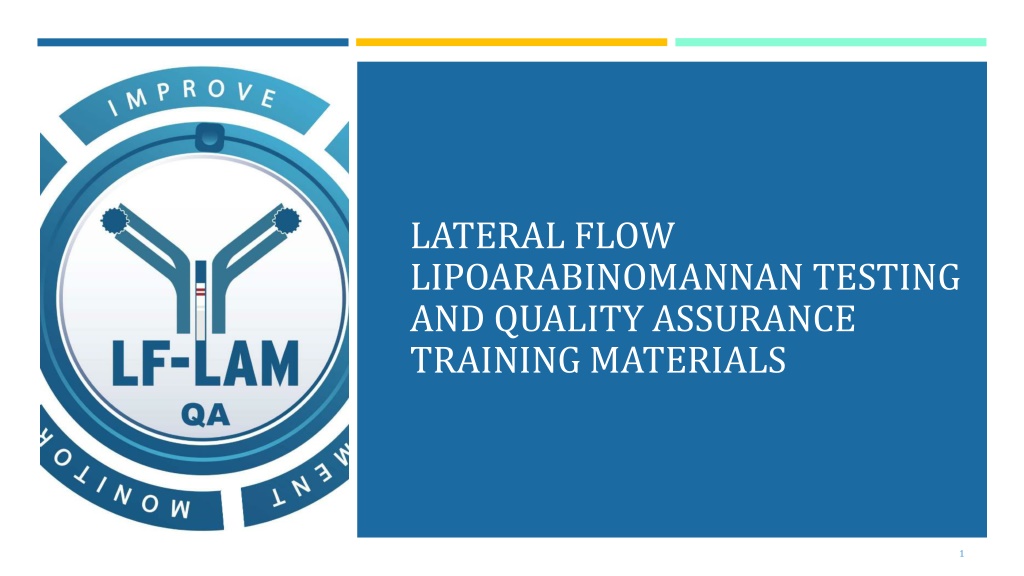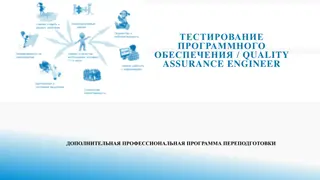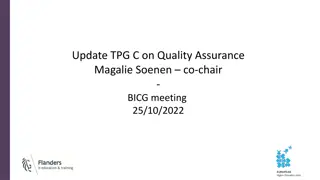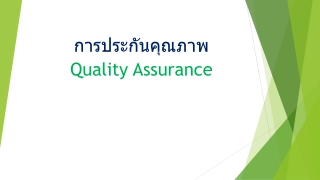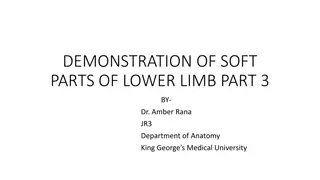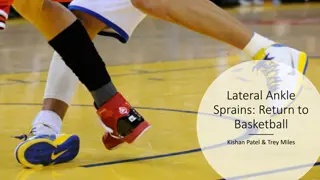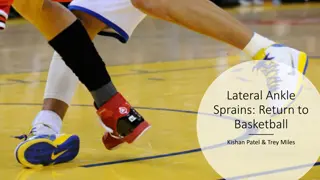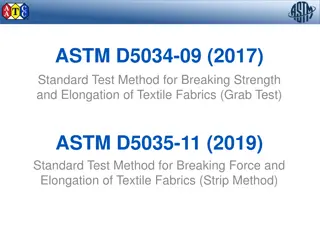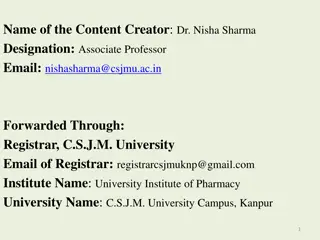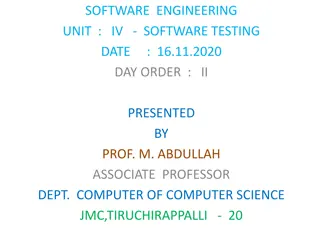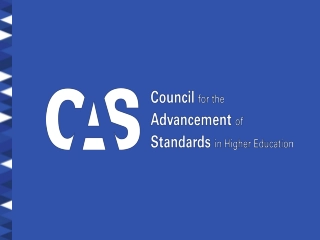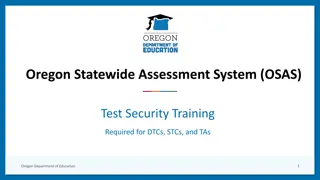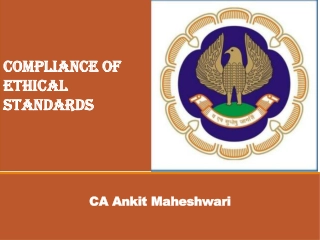LATERAL FLOW LIPOARABINOMANNAN TESTING AND QUALITY ASSURANCE TRAINING MATERIALS
This training program provides comprehensive materials for conducting quality-assured Lateral Flow Lipoarabinomannan (LF-LAM) testing in the context of Tuberculosis (TB) and TB/HIV co-infection. The agenda covers essential aspects such as test procedures, quality improvement, and participant objectives. Participants, including healthcare workers and supervisors, will gain the necessary knowledge and skills to perform LF-LAM testing accurately, comply with quality standards, and interpret results for patient care. The training is facilitated by competent trainers to ensure effectiveness and consistency throughout.
Download Presentation

Please find below an Image/Link to download the presentation.
The content on the website is provided AS IS for your information and personal use only. It may not be sold, licensed, or shared on other websites without obtaining consent from the author. Download presentation by click this link. If you encounter any issues during the download, it is possible that the publisher has removed the file from their server.
E N D
Presentation Transcript
LATERAL FLOW LIPOARABINOMANNAN TESTING AND QUALITY ASSURANCE TRAINING MATERIALS 1
TRAINING AGENDA Registration (as needed) Introductions, Training Objectives, and Outline Review Training Slides: Overview of TB Disease and TB/HIV Co-Infection Introduction to LF-LAM Testing The Alere Determine TB-LAM Ag Testing Procedure Continuous Quality Improvement of LF-LAM Testing De-brief and Closure Note: This training is only conducted by trained and competent trainers. The trainers will stay for the whole training period to ensure consistency, facilitate group interactions, demonstrate the testing procedure, and assess trainee competence to perform the test. 2
TRAINING GOAL AND OBJECTIVES Goal Build capacity to effectively provide quality-assured LF-LAM testing services in a safe environment Objectives Equip participants with the knowledge, skills and understanding required to: Perform LF-LAM testing accurately and reliably Comply with quality and biosafety requirements Interpret test results accurately for patient care 4
PARTICIPANTS Participants may include stakeholders involved in LF-LAM test implementation across the TB cascade of care, including: Testers and testing sites Healthcare workers and TB or HIV clinicians Technical Advisory/ Working Group members Above site supervisors Policy and planning personnel Participants should be available to attend the entire didactic training. Testers should attend the full training, including testing procedure demonstration & independent completion. 5
OVERVIEW OF TB DISEASE AND TB/HIV CO-INFECTION
TUBERCULOSIS (TB) How is TB transmitted? What is TB? An infectious disease caused by the bacterium Mycobacterium tuberculosis (Mtb) TB can only be spread by those with active TB disease (not just TB infection) Most commonly affects the lungs (pulmonary) TB is spread through the air Activities that can lead to transmission include speaking, singing, and coughing The most common cause of death from an infectious disease worldwide TB can remain in the air for hours 7 Global tuberculosis report 2023 (who.int)
HIV CO-INFECTION IMPACT ON TB/HIV PATIENTS TB continues to be the leading cause of death among HIV-infected people People living with HIV (PLHIV) are 18 times more likely to fall ill with TB and experience more TB symptoms Early TB/HIV diagnosis and prompt initiation of TB treatment: Reduces mortality Improves treatment outcomes and patient quality of life Reduces transmission of TB 8 *Fact sheet World TB Day 2022 (unaids.org)
KNOWLEDGE CHECK QUESTIONS (SELECT THE MOST ACCURATE CHOICE) 1. TB is a virus. True a. False b. 2. TB is transmitted when someone who is infected: Coughs a. Speaks b. Singing c. All of the above d. 3. HIV infection increases a TB patient s risk for which of the following? Becoming sick with TB a. Experiencing symptoms of TB a. Dying from TB b. All of the above c. 9
AN INTRODUCTION TO LF-LAM TESTING 10
WHAT IS LF-LAM? LF-LAM stands for Lateral Flow LipoArabinoMannan LAM is a component of the Mtb cell LF-LAM tests are used to detect LAM in urine collected from eligible HIV-positive individuals The Lateral Flow design of the LF-LAM test is simple, small, portable, and instrument-free 11
WHAT IS LIPOARABINOMANNAN (LAM)? A component of the outer cell wall of TB bacteria An antigen, meaning it causes an immune response when it enters the human body Sheds off from Mtb cells in the body during active TB disease. Many people living with HIV/AIDS have disseminated TB spread throughout the body, including TB in their kidneys (renal TB) When TB bacteria in the kidneys shed off LAM, it is excreted into urine, which is how the urine LF- LAM test can detect LAM, and associated TB disease Modified from the Treatment Action Group s Activist Guide to the LAM Test 12
PRINCIPLE OF THE DETERMINE TB LAM AG TEST Urine is added to the sample pad Urine flows across a membrane where LAM is bound by capture antibodies with gold reporter tags LAM-antibody complexes then migrate across, and are bound by, another set antibodies fixed to the membrane along the Test line signaling detection of LAM Remaining (unbound) capture antibodies migrate to a second set of antibodies along the Control line signaling test validity 13 2020 Global Laboratory Initiative LF-LAM Practical Guide
ADVANTAGES AND BENEFITS OF LF-LAM TESTING FOR TB DETECTION AMONG PLHIV Pulmonary TB is more difficult to diagnose among People Living with HIV (PLHIV) Most diagnostic tests for TB rely on sputum samples Sputum is difficult for PLHIV to produce and often contains low or variable amounts of mycobacteria PLHIV experience higher rates of Extra-Pulmonary TB (EPTB) than those without HIV Majority of EPTB patients do not have detectable mycobacteria in sputum LF-LAM is test that can bacteriologically confirm TB among PLHIV unable to produce sputum Simple test; requires minimal infrastructure and supplies Point-of-care assay that can be performed by trained lab- & non-lab testers Fastest diagnostic test time for same-day result reporting for patient impact & clinical action Mortality and treatment initiation benefits for PLHIV irrespective of setting 14 Urine is easier to collect from PLHIV and is relatively less biohazardous compared to sputum . 2021 Nathavitharana RR, et al. Coch. Rev; *Adult PLHIV at hospitals in Malawi, South Africa, Tanzania, Zambia and Zimbabwe; ^Adult PLHIV at primary healthcare clinics in South Africa
PRACTICAL LIMITATIONS OF LF-LAM TESTING Variable sensitivity (39-67% for the Determine TB LAM Ag test*) Only PLHIV are eligible for LF-LAM testing (not HIV-negative persons) Cannot distinguish tuberculous and non-tuberculous mycobacteria Cannot detect drug resistance Not recommended for TB treatment monitoring 15 * Determine TB LAM Ag test package insert
WHEN TO USE LF-LAM: [COUNTRY] LF-LAM TESTING ALGORITHM [INSERT NATIONAL DIAGNOSTIC ALGORITHM DIAGRAM HERE] Always follow the sequence of the tests in the national algorithm 16
WHEN NOT TO USE LF-LAM: 2021 WHO GLOBAL GUIDELINES WHO recommends against using LF-LAM to assist in the diagnosis of active TB in HIV-positive adults, adolescents and children in outpatient settings: without assessing TB symptoms (strong recommendation, very low certainty in the evidence about test accuracy) without TB symptoms and unknown CD4 cell count or CD4 cell count greater than or equal to 200 cells/ l (strong recommendation, very low certainty in the evidence about test accuracy) without TB symptoms and with a CD4 cell count of 100 200 cells / l (conditional recommendation, very low certainty in the evidence about test accuracy) 17 Lateral flow urine lipoarabinomannan assay (LF-LAM) for the diagnosis of active tuberculosis in people living with HIV: policy update 2019 (who.int)
KNOWLEDGE CHECK QUESTION (USE THE QUESTIONS BELOW FOR TRAINEE RESPONSE AND GROUP DISCUSSION) 1)What is LAM? 2)What are the benefits of LF-LAM testing? 3)What are the limitations of LF-LAM testing? 4)According to the national algorithm, which patients are eligible for LF-LAM testing? 5)According to the national algorithm, what action should be taken after a positive LF-LAM test result? A negative result? 6)Who should not be tested with LF-LAM? 18
APPLYING THE LF-LAM TESTING ALGORITHM: CASE SCENARIO REVIEW & PRACTICE 19
NOTES ON APPLYING THE ALGORITHM: CLINIC-TESTER COORDINATION FOR SUCCESS Before LF-LAM Testing Clinical team is aware of, and compliant with, the national testing algorithm when requesting an LF-LAM test Clinical teams are aware of LF-LAM test availability Clinical team completes relevant patient information (HIV status, other) when requesting an LF-LAM test Sputum (or other WHO recommended sample type) must be collected in parallel to perform molecular WHO-recommended rapid diagnostic (mWRD) tests for confirmation of Tb diagnosis and detection of drug resistance. After LF-LAM Testing Tester communicates inability to test, invalid or indeterminate/equivocal test results (if repeated and confirmed), and valid test results promptly to the referring clinical team 20 Tester communicates with the clinical team regarding need for any additional testing
CASE SCENARIO 1 A person living with HIV (PLHIV) with cough visits a tertiary clinic. LF-LAM tests and trained testers are available at the clinic, but there is no facility to perform an mWRD. What would you do? Brief Group Discussion Prompts: What if you could collect sputum? What if the LF-LAM test was positive? 21 Modified from WHO Operational Handbook on Tuberculosis. Module 3: Diagnosis
CASE SCENARIO 1 A person living with HIV (PLHIV) with cough visits a tertiary clinic. LF-LAM tests and trained testers are available at the clinic, but there is no facility to perform an mWRD. What would you do? Initiate TB treatment with first line drugs LF-LAM test is positive Perform LF-LAM PLHIV with cough Send the sputum sample for Xpert MTB/RIF Ultra The test was positive for rifampicin susceptible Mtb Continue to treat the patient with first line drugs 22 Modified from WHO Operational Handbook on Tuberculosis. Module 3: Diagnosis
CASE SCENARIO 2 A person living with HIV (PLHIV) with cough visits a clinic. LF-LAM tests and trained testers are available at the clinic. The clinic is also has the facility to perform an mWRD. What would you do? Brief Group Discussion Prompts: What if you could collect sputum? What if the LF-LAM test was negative? 23 Modified from WHO Operational Handbook on Tuberculosis. Module 3: Diagnosis
CASE SCENARIO 2 A person living with HIV (PLHIV) with cough visits a clinic. LF-LAM tests and trained testers are available at the clinic. The clinic is also has the facility to perform an mWRD. What would you do? LF-LAM test is negative Wait for mWRD results Perform LF-LAM PLHIV with cough Concurrently sent the sputum sample for Xpert MTB/RIF Ultra The test was positive for rifampicin susceptible Mtb Initiate TB treatment with first line drugs 24 Modified from WHO Operational Handbook on Tuberculosis. Module 3: Diagnosis
CASE SCENARIO 3 A person who is HIV negative with cough visits a tertiary clinic. LF-LAM tests and trained testers are available at the clinic. The clinic also has the facility to perform an mWRD. What would you do? Brief Group Discussion Prompts: Which samples would you collect? Which tests would you request or do? 25 Modified from WHO Operational Handbook on Tuberculosis. Module 3: Diagnosis
CASE SCENARIO 3 A person who is HIV negative with cough visits a tertiary clinic. LF-LAM test and trained tester are available at the clinic. The clinic is also has the facility to perform an mWRD. What would you do? Will NOT perform LF-LAM test HIV negative person with cough Send the sputum sample for Xpert MTB/RIF Ultra The test was positive for rifampicin susceptible Mtb Initiate TB treatment with first line drugs 26 Modified from WHO Operational Handbook on Tuberculosis. Module 3: Diagnosis
CASE SCENARIO 4 A person living with HIV (PLHIV) with cough visits a tertiary clinic. LF-LAM testing is available at the clinic, but the trained LF-LAM tester is on leave for the day. There is another health care worker who has observed the LF- LAM test being performed. The clinic also has the facility to perform an mWRD, but is backed up for two days. What would you do? Brief Group Discussion Prompts: Which samples would you collect? Who would do the testing? 27
CASE SCENARIO 4 A person living with HIV (PLHIV) with cough visits a tertiary clinic. LF-LAM test is available at the clinic, but the trained LF-LAM tester is on leave for the day, but there is another health care worker who has observed the LF- LAM test being performed. The clinic also has the facility to perform an mWRD, but is backed up for two days. What would you do? The untrained tester WILL NOT perform LF-LAM test Store the urine sample according to IFU and wait for the trained tester Initiate TB treatment with first line drugs LF-LAM test is positive PLHIV with cough Send the sputum sample for Xpert MTB/RIF Ultra The test was positive for rifampicin susceptible Mtb Continue to treat the patient with first line drugs 28
ABBOTT/ ALERE DETERMINETB LAM AG TESTING PROCEDURE 29
REQUESTING AN LF-LAM TEST Complete the Test Request Form Label specimen collection containers with patient name, ID, and [insert any setting- or site-specific required labels] [Insert image of the national/ site test request form here] [Insert any additional LF-LAM test request procedure or guidance] 30
GETTING READY Wear appropriate PPE (minimum gloves and gown) Prepare testing station and materials needed (test kit, precision pipette- if relevant, timer, biohazard discard bags) Verify the condition of test kits (expiry date and storage) and record lot number. Remove the test kit and the reference card to be used from the foil pouch and reseal the pouch containing the remaining tests. Collect urine specimen from patient. Note: Use 1 strip per test and be sure to preserve the lot number on the remaining packet of strips. 31
IMPORTANCE OF BIOSAFETY To reduce health-related risks associated with handling biological hazards in testing environments Every specimen and test should be treated as though it is infectious 32
LF-LAM BIOSAFETY CONSIDERATIONS Low-complexity, rapid, lateral flow test that is completed with minimal sample handling and manipulation Urine is a non-respiratory sample type with low risk of Mtb aerosolization, regardless, to maximize tester safety: urine collection, handling, and testing should be done in a well-ventilated space. PPE: Gloves and lab coat (always follow the site specific or basic universal biosafety protocol) Infrastructure: No biosafety cabinet required Reagents: All testing reagents provided in the kit Waste Disposal: Follow the site specific/ or basic universal biosafety protocol (urine specimen should be treated as infectious and discarded appropriately) 33
ENSURE PROPER STORAGE OF LF-LAM TEST KITS Keep in a clean, organized and locked storeroom Store according to manufacturer s instruction's Place in well ventilated room Store away from direct sunlight Place items on shelves Organize existing and new shipments by expiration dates Recommended storage temperature for LF-LAM test kits : 2 C 30 C Shelf-life of test kits under recommended storage conditions: 2 years from date of manufacture First expiry, first out 34
COLLECTING URINE FOR LF-LAM TESTING Urine Collection Area Identify and designate an area with adequate privacy (a toilet or a covered shed) for the patient to collect the urine sample privately. Ensure that there is facility for handwashing (with soap and clean water) within or close to the designated urine collection area for the patient and/or the caregiver and the healthcare worker to use before and after collecting and handling the urine sample. Procedure for Urine Collection Label the urine collection container with patient identifiers at the time of urine collection. Prior to sample collection, instruct the patient or caregiver to: Clean the urogenital area with a sterile cleansing wipe and dispose of the wipe according to biowaste disposal procedures. After cleansing, to collect a minimum of 1 ml of midstream urine in the labelled urine collection container. If the sample is to be tested immediately, proceed according to the standard operating procedure (SOP) for Determine TB LAM Ag testing. If the sample is not used immediately, store the sample as described in table below and proceed according to the SOP for Determine TB LAM Ag testing when the sample taken out from storage and used for testing. Temperature Room temperature (18 to 30 C) 8 hours Refrigerated temperature 2 to 8 C 3 days Frozen temperature -20 C 3 years# 35 Storage times # Samples may only undergo freeze thaw three times prior to testing.
USING THE ABBOTT DETERMINE TB LAM AG TEST Tests packaged in kits of 25 test strips After removal of each test strip, the kit/ bag should be completely resealed to prevent moisture build-up Each test is separated for use via a perforated edge, labeled and its aluminum protective cover is removed from the surface 60ul of urine is pipetted onto the sample pad with timer set for 25 minutes Resultant Patient and Control bands are read against a Reference Scale Card 36 Practical Considerations for LF-LAM TB Diagnostic Testing, Patricia Hall (TCMT/ILB/DGHT/CGH/CDC) 2020 Global Laboratory Initiative LF-LAM Practical Guide
RESULT READING, INTERPRETATION AND REPORTING To assist in reading and interpretation, read test strips in normal indoor lighting. Note: do not read strips in direct sunlight Using the Reference Scale Card select and result log or register, read and document the test result and the line intensity (1,2,3,4) that is closest to the test line (refer to figure below) Check if for a visible band in the control and patient window of the test strip and determine results as indicated below: 37 Adapted from GLI Practical implementation of lateral flow urine lipoarabinomannan assay for detection of active tuberculosis in people living with HIV
TROUBLESHOOTING INVALID RESULTS Problem Potential cause Action Repeat the test using new test and same sample (within time) No control line or band present Damaged test Follow each testing step according to the procedure Proper procedure not followed Re-check specimen volumes Wait for the specified time before reading the test Check expiration date of kit, if outdated, use test from in-date kit. 38
KNOWLEDGE CHECK QUESTION What supplies do you need for urine specimen collection? At what temperature / where should urine specimens be stored before or after being tested? How much volume of urine is added to the sample pad? What is the waiting time for reading Alere Determine TB LAM Ag test results? Invalid results are a sign of positive test results True False If the results are invalid, the test should be repeated. True False Blood may be used for Alere Determine TB LAM Ag testing. True 39 False
OPTIONAL DEMONSTRATION OF LF-LAM TESTING Trainer performs Alere Determine TB LAM Ag testing 40
CONTINUOUS QUALITY IMPROVEMENT OF LF-LAM TESTING 41
CONTINUOUS QUALITY IMPROVEMENT Planning Continual Quality Improvement (CQI) A formal process/plan that is a cyclic series of steps designed to enhance quality assurance processes leading to improved outcomes. Quality Improvement Implementation Critical for improving LF-LAM testing reliability, accuracy, timeliness, effectiveness and impact Monitoring and Evaluation 42
CONSIDERATIONS FOR LF-LAM TEST QUALITY ASSURANCE quality assurance testing Regular Checklists Above-Site and Site-Level Material Lists Forecasting Monitoring Storage M&E Tool Use with Corrective Actions for Gaps Algorithms SOPs Forms Trainings Pipettors Centrifuges Refrigerators Freezers Randomized New Lot QC Testing EQA/PT Initial 6 Months Annually 43
EXAMPLES OF QUALITY ASSURANCE GAPS AND SOLUTIONS FOR PRE-TESTING, TESTING, AND POST-TESTING PHASES OF THE LF-LAM PROCEDURE Problem Solution Pre-Testing Sample mislabeled or unlabeled Urine/ tests stored inappropriately Tests expired Work area not cleaned before/ between tests Label urine & tests completely/ accurately Always store urine & tests appropriately Check inventory and expiration dates Disinfect work area before patient sample testing Testing Testing algorithm not followed (urine from HIV- negative persons tested) Incubation time not followed Invalid result missed and reported (+) or (-) Improper volume of specimen used Incompatible solution used as QC material Transcription error in reporting Negative results not reported Positive results not used to start TB treatment Only test samples collected from eligible patients Strictly follow urine volume & incubation times Take time to interpret valid and invalid results Never use water, PBS, or other solutions not compatible with LF-LAM tests as QC material Post-Testing Re-check patient/client identifier Always report valid results Use positive TB test results in clinical decisions 44
TYPES OF QUALITY CONTROLS: INTERNAL AND EXTERNAL Internal Control is Included with the LF-LAM Test: Ensure the test is able to produce a valid result. Interpreted with every test run; if Control band is not present the result is Invalid. External Controls are NOT Included with LF-LAM Tests: External samples with known results are tested to verify that a tester at a testing site can use a standardized procedure to produce both valid and accurate results. External controls may be produced by a testing site (mWRD-positive and negative urine), by a regional or national TB external quality assurance program provider, or by a commercial source Depending on availability, recommended for use: (1) at the beginning of each testing week, (2) once for each new lot of tests, (3) anytime the temperature exceeds the recommended range for LF-LAM testing (2 to 30 C), and (4) to investigate challenges with testing accuracy or reliability. When received, the testing site should: (1) store according to instructions, (2) record date of use (for urine), and (3) ensure use prior to expiry/ reporting dates 45
MONITORING AND EVALUATION Monitoring Evaluation Why? To provide indications of progress (or lack of progress) Why? To improve the program using the data and information collected How? Determine the effectiveness, impact and sustainability of a program and understand why it is (or it is not) working How? Continuous collection of data and information to track progress to improve practices and have accountability 46 Adapted from Program Evaluation Home CDC & Monitoring and Evaluation (aphl.org)
WHO CONDUCTS MONITORING AND EVALUATION? M & E is a collective responsibility 47
M & E INDICATORS FOR LF-LAM TESTING Testing Site M & E Data collected includes routine LF-LAM test and QC activities at the testing site Examples: Number of specimens and QC samples tested, days when LF-LAM testing could not be performed, status of enrolment in External Quality Assurance programs (if available), number of trained and competent testers Supervisory Site M & E Consolidation of data from all the sites within the supervisory LF-LAM testing network Inclusive of in-patient, out-patient, and community/ outreach-based testing sites LF-LAM Testing Cascade M & E Data collected on the use of LF-LAM test and its impact on timely bacteriological confirmation and diagnosis of TB in the context of the country algorithm 48
QUALITY IMPROVEMENT TOOLS Onsite assessment and certification Stepwise Process for Improving Rapid Test (SPI-RT) for LF-LAM: Checklist for testing site quality assurance CLICQ! | Clinic-Laboratory Interface Continuous Quality Improvement & Diagnostic Cascade Evaluation (DiCE) Toolkit Improving Clinic lab interphase Quality indicator monitoring LF-LAM Testing M & E Tool with Automated Analyses 49
SUMMARY KEY LESSONS LEARNED Tuberculosis is caused by Mycobacterium tuberculosis, which is spread through the air LF-LAM tests are used to detect the lipoarabinomannan (LAM) cell wall component of Mtb in urine from HIV-positive persons LF-LAM is the only test that can bacteriologically confirm TB among PLHIV unable to produce sputum When testing is done according to the national algorithm and testing procedure by trained testers, LF-LAM may reduce TB- related morbidity and mortality among PLHIV The Alere Determine TB-LAM Ag Test is a point of care lateral flow assay that can be performed by trained lab- & non-lab testers in in-patient, out-patient, and community/ outreach settings The Determine TB LAM Ag Test is a low-complexity and rapid test that requires minimal sample handling and manipulation Common quality assurance challenges with LF-LAM testing can be addressed by ensuring testers receive appropriate initiation and refresher training, test according to the national algorithm, and routinely monitor and evaluate services There are a tools available for sites and supervisors for LF-LAM M&E to continuously improve the program & patient impact 50
